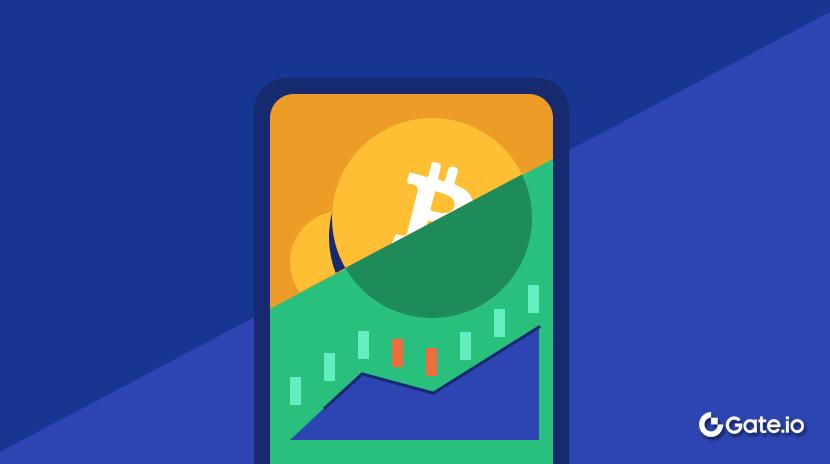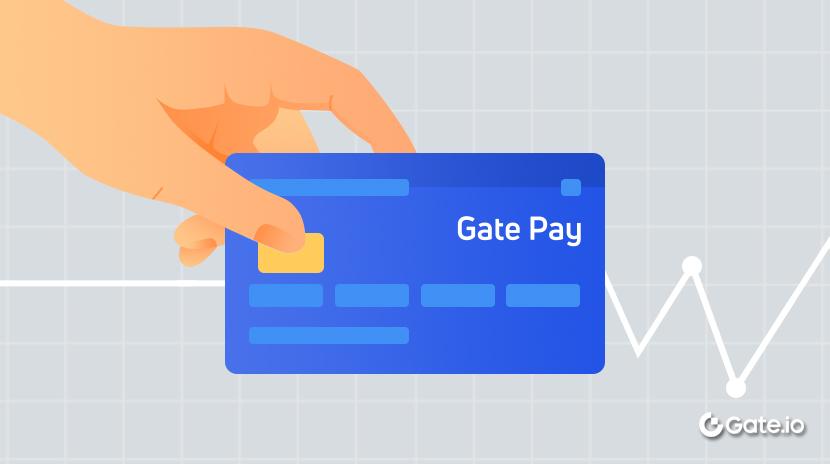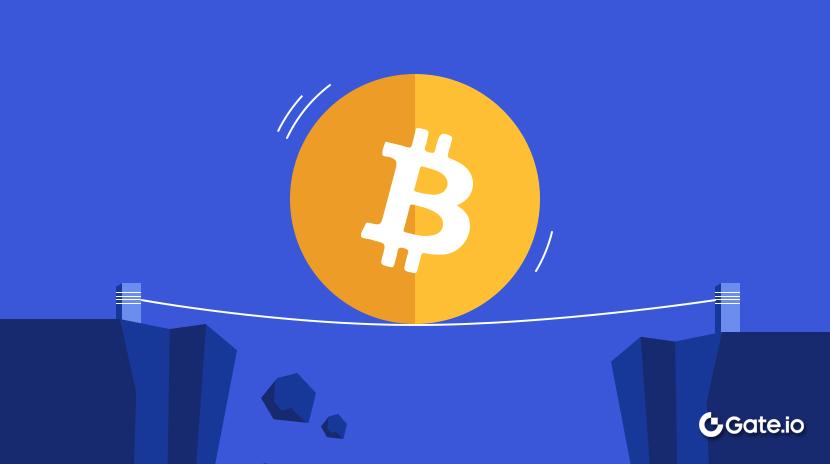成功したエアドロッププロジェクトを正確に特定して参加する方法は?
暗号通貨エアドロップの進化とトレンドについて深く掘り下げ、Optimism、Arbitrum、LayerZero、ZKsyncなどの人気のあるエアドロップケースを検討し、エアドロップの成功要因やアンチファーミングメカニズムを分析し、質の高いエアドロップを精確にフィルタリングする方法を提供します。紹介
暗号通貨の世界では、エアドロップはかつての「お金がただ待っているだけのゲーム」ではなく、プロジェクトとユーザーの間の戦いに変わってしまいました。Uniswapの大規模なエアドロップから5年後、エアドロップの風景は完全な変革を遂げました。エアドロッププロジェクトの絶え間ない流れから、常に変わるエアドロップ規則、狡猾なシビルハントからコミュニティに嫌われたプロジェクト内部取引まで、多岐にわたります。誰もが、ユーザーが単なる豚足の食事、奇跡的な富の急増、またはただの虚しい待ちに耐えているのかを知りません。
しかしながら、無限に続くエアドロッププロジェクトに直面して、本物のポテンシャルを持ち、エアドロップの期待に応える可能性があるものをどのように特定すればいいのか、それはすべてのユーザーの問題です。この記事は、エアドロップの本質と成功要因を深く理解し、業界事例を通じて、次の参加に値する高品質なエアドロップを正確に特定するのに役立ちます。暗号通貨初心者であろうとベテランであろうと、ここで答えを見つけることができます。
エアドロップの起源と発展
「エアドロップ」という概念は、プロジェクトが特定のユーザーグループに無料のトークンを配布して新しいプロジェクトを促進したり、初期の支援者に報酬を与えることを指します。この方法は、2014年3月にアイスランドのオーロラコインプロジェクトが全市民に無料でトークンを配布したことに遡ります。当初、1人あたり31.8 AURを配布し、後に318および636 AURに増やされ、アイスランドでこの暗号通貨の利用を促進することを目指しました。
ブロックチェーン技術の逐次的な発展とICOブームの台頭に伴い、エアドロップもさまざまな変革を遂げてきました。
- エアドロップの初期段階では、すべてがまだ探索的な段階で、複雑な要件はほとんどありませんでした。ユーザーはウォレットアドレスだけで簡単にトークンを請求することができました。(たとえば、2019年にStellarが大規模なエアドロップを実施し、世界中のユーザーに12億XLMトークンを配布しました。)
- ただし、流動性マイニングの台頭とともに、ユーザーは流動性マイニングリワードに魅了され、TVLの成長は、マイニング、ステーキング、および売却のためのより成熟した戦略とともに訪れました。
- そして、Uniswapのエアドロップの到来が、エアドロップの新時代の幕開けを告げました。 これにより、エアドロップは公式にユーザーを引きつけ、資金を調達し、トークンをリストするための重要な手段となり、この分野で独自の戦略を模索する特別な「エアドロップ農家」のグループが生まれました。
- ただし、ZKsyncやLayerZeroなどのプロジェクトによる2024年の大規模なアンチファーミング活動の後、エアドロップセクターは一時的な冷却期を経験しました。それでも、「エアドロップファーマー」の多くは、引き続き潜在的なエアドロッププロジェクトを探索しています。
かつて人気のあったエアドロッププロジェクト
今日の激しい競争のエアドロップ市場で正確な動きをするためには、かつて莫大な人気を博したエアドロッププロジェクトを見直すことが不可欠です。これらのプロジェクトは突然の富と貴重な経験や教訓の物語を残しました。
すべてのための太陽光-楽観主義
Optimismは、Ethereum上のLayer 2スケーリングネットワークであり、Optimistic Rollup技術を使用して、Ethereum上でより速く、より安い取引を可能にします。取引手数料を大幅に削減し、取引速度を向上させる一方、Ethereumメインネットのセキュリティを維持します。
Optimismのエアドロップルールは非常に成功したエアドロップ事例となりました。Optimismは主に6種類のユーザーにトークンを配布しました:

ソース:エアドロップ 1
その成功の秘訣は、ユーザーの活動と貢献に基づく大きな違いにあります:ユーザーのオンチェーン上の行動が活発であるほど、彼らが受け取るエアドロップトークンが増えます。さらに、より深くユーザーが相互作用するほど、最終的に受け取るエアドロップがより重要になる「スタッキング報酬」設計がありました。さらに、全体の配布プロセスは段階的に行われ、ユーザーを引きつけ、エアドロップをコミュニティを活性化し、プロジェクトの成長を促進するツールに変えました。
このエアドロップイベントでは、「エアドロップファーマー」に新しいアプローチを提供しました - 深いインタラクションを持つプレミアムアカウントと最低要件を満たす基本アカウント。 Optimismと短期間に関わったユーザーは少額のエアドロップを受け取りましたが、長期間にわたりOptimismをより深く使用したユーザーは、数回しかインタラクションしなかった基本アカウントよりもはるかに多くを受け取りました。その結果、多くの後続のブロックチェーンエアドロップルールは、ある程度Optimismのアプローチに倣ったエアドロップ戦略をモデルにしています。
エアドロップジャイアント―アービトラム
Arbitrum(アービトラム)は、Ethereumに基づくLayer 2のスケーリングソリューションであり、Ethereumの遅い取引速度と高い手数料の問題を解決するために設計されています。Optimistic Rollup技術を使用して、Layer 2で多くの取引をバッチ処理し、その結果をEthereumメインネットに送信することで、セキュリティを「楽観的な仮定」と「詐欺証拠」のメカニズムを通じて確保します。Arbitrumは高いスケーラビリティ、低い手数料、そしてEthereumとの完全な互換性を提供しています。
Optimismの富の効果により、Arbitrumのスナップショットでは約230万のアドレスが見られました。エアドロップをより公平に配布するために、Arbitrumは異なるタイプのユーザーを区別するというOptimismの戦略にポイントシステムと厳格なシビルハントチェックを追加しました。Nansenのデータによると、約230万のArbitrumウォレットアドレスのうち、約625,000(約28%)のアドレスが3ポイント以上を獲得し、ARBのエアドロップの対象となりました。残りの約70%のアドレスが除外され、約135,000のアドレスが「シビル」(不正なアドレス)として排除されたことがわかりました。これは比較的低い割合です。このエアドロップは、わずかな取引しか行われていない低ランクのアカウントを罰し、積極的で連続的に運営されているプレミアムアカウントを報酬とすることに焦点を当てています。Arbitrumのエアドロップルールは以下の通りです。

詳細なルールについては、次を参照してください: $ARBエアドロップの資格と配布仕様 | Arbitrum DAO - ガバナンス文書
多くの「エアドロップファーマー」は、アービトラムのエアドロップを通じて初めて財を成した。さらに、アービトラムのエアドロップから得た富に刺激され、より多くの人々が公式に「エアドロップファーミング」の道に乗り出した。今でも、プロジェクトが「アンチファーミング」を実装するたびに、あの寛大なアービトラムのエアドロップを思い起こさずにはいられない。
最も厳格なシビルハント—LayerZero
LayerZeroは、異なるブロックチェーン間での安全かつ効率的な相互運用性を可能にするように設計されたクロスチェーン通信プロトコルです。統一インターフェースを提供することで、LayerZeroは資産、情報、メッセージを異なるチェーン間で流動させ、ブロックチェーンエコシステム内の連携を促進します。
LayerZeroを皮切りに、2024年のエアドロップの道筋は「反農業」に傾き始めた。LayerZeroの資金と評価額が高いため、「エアドロップ農家」はエアドロップに大きな期待を寄せていました。個人ユーザーとプロのスタジオの両方がLayerZeroのエアドロップに参加するために集まり、ソーシャルメディアにはさまざまなエアドロップチュートリアルが殺到し、LayerZeroでのトランザクション数は1日あたり200,000を超えました。オンチェーントランザクションとアドレスの急増により、LayerZeroの共同創設者であるブライアン・ペレグリーノは、スナップショットを発表した翌日(2024年5月3日)に過去最大の「シビルハント」作戦を開始しました。ユーザーには3つの選択肢が提示されました:シビルアドレスを積極的に開示し、プロジェクトのスクリーニングプロセス中にシビルアドレスが認識されるようにすることで、エアドロップの割り当ての15%を維持します。シビルの住所を積極的に報告せずにプロジェクトの審査を待ち、プロジェクトの内部審査メカニズムに完全に依存しますが、トークンを受け取らない可能性があります。または、報告メカニズムを導入して、ユーザーが他人の「シビル」アドレスを報告できるようにします。レポートが成功すると、報告されたアカウントに割り当てられたトークンの10%がレポーターに付与されます。最終的に、LayerZeroは当初シビルアドレスに割り当てられていた1,000万トークンを没収しました。チームは最終的なシビルリストをまだ発表していませんが、少なくとも100万のアドレスが関与したと推定されており、史上最大のシビルデータベースとなっています。
LayerZeroのエアドロップルール:
- 取引の挙動:取引回数、取引金額、および取引タイプ(流動性提供やNFTの転送など)はすべて、エアドロップの適格性に影響します。
- アクティブな早期ユーザーは追加の報酬を受け取ります。
- プロトコル手数料の貢献:ユーザーが支払った手数料は考慮され、より高い手数料を支払った貢献者は、より大きな報酬を受け取る可能性があります。
このシビルハント行為は、LayerZeroのコミュニティユーザーから批判されました。多くの人が、厳格なシビルルールを受け入れることができる一方で、相互報告は結局は皆に害を及ぼすと表明しました。LayerZeroは人間の本能を利用し、「エアドロップファーミング」をユーザー同士の戦場に変え、プロジェクトチームが恩恵を受けたのです。
「Rat Trading」プロジェクト—ZKsync
Matter Labsによって開発されたZKsyncは、Ethernet Layer 2スケーリングソリューションであり、Zero-Knowledge Rollups(zk-Rollups)を通じてEthernetのトランザクションスループットを増やし、トランザクション手数料を削減することを目指していますが、ネットワークのセキュリティと分散を維持します。
LayerZeroと比較すると、ZKsyncは最初にコミュニティのフィードバックを受け入れ、トークン配布の透明性とシビルハンティングの行動を保証しました。しかし、ZKsyncチームはトークン配布プロセス中に明確なコミュニティの合意が欠けており、ユーザーフィードバックを無視し、特定のパーティーを優遇するように事前に内部アドレスを使用したとされています。Pudgy Penguins、Milady Maker、DegenなどのZKsyncエコシステムに積極的に参加していなかった多くのNFT保有者が、エアドロップを受け取り、その金額は多くのアクティブユーザーを上回っていました。これらの「非準拠のエアドロップ受領者」は実際のユーザーの報酬を希薄化し、広範な不満を引き起こしました。ソーシャルメディアは正義を要求する声で溢れ、ZKsyncエコシステム内の一部のプロジェクトチームさえも抗議に加わりました。
ZKsyncのエアドロップルール:

ソース: ZK エアドロップ | ZK ネイション
ZKsyncプロジェクトによる不公平な配布のため、「エアドロップハンター」の一部は徐々にエアドロッププロジェクトへの信頼を失い、それによって「トップティア」のブロックチェーンから「衰退中」のブロックチェーンへと転落した。
適切なエアドロッププロジェクトを選択して参加する方法は?
プロジェクトの基本情報を理解する
- トラック分類:特定のプロジェクトを分析する際に、関連するトラックに分類し、主流のものに焦点を当てます。まず、主流のトラックを理解し、基本的な理解を形成し、その後、エコシステム内のプロジェクトをランク付けして分析します。
- プロジェクトの背景: プロジェクトを確認した後、コアの哲学、技術アーキテクチャ、およびロードマップを理解することが重要です。プロジェクトが革新的であり、市場の需要に適合し、独自の競争上の優位性を持っているかどうかを評価してください。
- 現在のステータス:プロジェクトの開発進捗状況、運用状況、公式リリース計画の有無を確認してください。プロジェクトのステージ(例:スタートアップ、シードラウンド、開発段階)とTGE日、ノード計画、経済的な詳細を確認してください。
- チームのアイデンティティの確認:創設チームメンバーについて学び、彼らのアイデンティティと職務経歴を確認します。チームメンバーが関連する業界経験と技術的なバックグラウンドを持っているかInvestiGate.ioします。
- チーム業界の評判:InvestiGate.ioのチームの業界での評判を調査します。彼らがブロックチェーンや関連分野で高い認知度を持っているか、他の成功したプロジェクトに関与しているか、重要なテック企業や投資機関で働いているかどうかを確認します。
- 歴史的な法的問題:プロジェクトまたはそのメンバーに法的訴訟や不適切な行動があるかどうか、詐欺やその他のネガティブな出来事が関与しているかに特に注意を払ってください。
- ソーシャルメディアアカウント調査:名前を変更したプロジェクトや期限切れのアカウントを含むプロジェクトについては、特に「ゼロ」または失敗したプロジェクトに関連する歴史がある場合、これらの変更の理由と背景を注意深く調査してください。
- ファンディングラウンドと金額:プロジェクトがいずれかのファンディングラウンドを完了し、有名な投資家またはエンジェル投資家が関与しているかどうかをInvestiGate.ioで確認してください。プロジェクトの資金調達状況、総調達額、参加投資家、資金調達段階(シードラウンド、Aラウンド、Bラウンドなど)を確認してください。
- 評価分析:プロジェクトの技術的能力、チームの背景、資金状況に基づいて、初期の評価分析を行います。シードラウンドの資金調達額、現在の市場需要、および類似プロジェクトの市場評価を使用して、合理的な予測を行うことができます。
- 同様のプロジェクトの比較分析:業界内の類似プロジェクトの評価を比較し、同じトラックでのプロジェクトの競争力を分析します。類似プロジェクトへの市場フィードバックやユーザーの関心を理解し、プロジェクトの価値を決定します。
- コアアプローチ:プロジェクトを分析する際は、まず関連するトラックに分類し、ハイライトを理解し、チームメンバーの身元を確認し、市場活動戦略を分析し、特にプロジェクトチームの視点を採用し、複数の角度や次元から探求します。
コアアイデア:プロジェクトを分析する際は、まず関連するトラックに分類し、そのハイライトを理解し、チームメンバーのアイデンティティを検証し、市場活動戦略を分析し、特にプロジェクトの視点を取り入れ、複数の角度や次元から探求することが重要です。
プロジェクトのエアドロップ機会を確認
- タスクの参加費: ギャラクシータスクなどのタスクは、Twitterのフォロー、Discordへの参加、ソーシャル活動に参加する必要があるので、比較的低コストで参加障壁が低いです。一方、テストネットのインタラクションには、特定のウォレットのインストールやプラットフォームとのやり取りが必要なため、やや難易度が上がります。しかし、メインネット上でのインタラクションが、実質的な報酬を得るための鍵となることがよくあります。
- 報酬の期待とリスク:報酬とコストの比率を計算することで、潜在的なリターンとリスクを評価するのに役立ちます。この比率は、必要な努力が潜在的な報酬に値するかどうかを決定する上で不可欠です。
- アクティビティの期間と参加者数の変化:アクティビティの期間や参加者数の変動を評価することは、タスクの人気や報酬分配の潜在的な変化を予測するのに役立ちます。これらのトレンドをモニタリングすることで、競争力のあるタスクや時間を投資する価値があるかどうかが見えてきます。
- プロジェクトによる報酬の明確なコミットメント: プロジェクトが報酬の配布方法、期待されるリターン、割り当て規則を明確に述べているかどうかを確認することは重要です。たとえば、Galaxy Missionsやテストネットの相互作用などのタスクでは、報酬の配布に関する明確なガイドラインが提供されることがよくあり、参加者が何を期待できるかを理解しやすくしています。
- アクティビティの開始および終了時間:アクティビティの開始および終了日を確認することは重要です。これらの時間枠を知ることは、参加する価値があるかどうかを判断し、重要な時間枠を逃さないために役立ちます。たとえば、Galaxyタスクやテストネットのインタラクションの正確な参加タイムラインを知ることは、参加者が参加するかどうかを決定するために重要です。
エアドロップ収益を最大化する方法
- プレミアムアカウントの作成:
プレミアムアカウントは、その名前が示すように、実際のユーザーによる高品質な行動を備えたアカウントです。各アカウントは、オンチェーンの本物の行動、独立した行動、合理的なオンチェーン資産の配分、一定額のガス手数料支払いなどを示す必要があります。焦点を当てるべき重要な要因は、資金の保持、オンチェーンの活動、資産の多様性、オンチェーンのアイデンティティ、プロジェクトへの忠誠心、メインネットのデータなどであり、アカウントの「プロフィール」を向上させるためです。これは、一部のプロジェクトでは、アカウントの活動が将来のエアドロップの割り当てや他の機会の確率に影響を与える可能性があるためです。要するに、プレミアムアカウントは、実際のアカウントと同様の行動を取るべきです。
プロジェクトチームが報酬基準を明確に定義する活動(Galaxy missions、testnets、およびノードテストなど)では、単に活動で必要とされる通りのインタラクションを行うことができます。
特定の活動要件がないプロジェクトについては、過去の人気のあるエアドロッププロジェクトのルールを参照してインタラクションを行うことができます。要約すると、主要な要素は、時間枠とインタラクション量です。
- マルチアカウント戦略:
マルチアカウント戦略の中核はリスクの分散にあり、主な目標は単一のアカウントがエアドロップを逃すことなくまたは"シビル"としてフラグ付けされることを防ぐことです。ただし、マルチアカウント操作はシビル攻撃と同じではないことを強調することが重要です。逆に、適切な隔離が維持されている限り、マルチアカウント戦略のリスクは実際にコントロール可能です。この戦略は大数の法則と広範なカバレッジの原則に従っており、複数のアカウントを使用することで、全体的な成功確率が高まります。一方、すべてのリソースを単一のアカウントに投資することはより不確実性が高く、リターンはマルチアカウント戦略に勝るものではないかもしれません。
アカウント設定フェーズ中には、アカウントの有効性と差別化を確保するために基本的な資金フロー原則に従う必要があります。まず、資金源は可能な限り多様化すべきであり、すべての口座が同時または同様の方法で資金を注入するのを避けることで、フラグを立てられるリスクを軽減します。さらに、大口の集中的な預入れや引き出しは避けるべきであり、複数の口座の資金が同じアドレスに保存されていないことが重要です。これにより、資金の流れがより自然に見えるようになります。同時に、相互作用の時間や金額はランダム化されるべきであり、機械的な操作を避け、検出の可能性を減らすことが重要です。マルチチェーン展開も重要であり、異なるチェーン上で正当なユーザーの痕跡を残すことで、口座がより自然かつ信頼性のあるものに見えます。
アカウント育成および相互作用フェーズでは、各アカウントは独立した振る舞いを維持する必要があり、同時に一括の行動を避けるべきです。相互作用量、取引順序、および異なるプロトコルの組み合わせは直線的な操作を避けるためにランダム化されるべきです。マルチチェーン展開は継続して拡大され、独立した相互作用パスが確保されるようにすることで、アカウントの信頼性が向上します。さらに、異なる資産の保有、DAOの投票への参加、NFTの発行、DeFiのステーキングなどの活動によって、アカウントの重みが向上し、高品質なユーザープロファイルが作成されます。最後に、相互作用中にはDeFi戦略を統合し、埋め込み相互作用を実施して、ガス手数料が効果的に使用され、全体的なリターンとセキュリティが向上するようにします。
- "Sybils"の回避:
エアドロップルールでは、「シビル」は異常な方法を使用してエアドロップを大量に取得する行動を指します。プロジェクトは通常、「コミュニティを保護する」という理由でシビルハントを正当化しますので、あなたがスクリーニングされないと思ってはいけません。
あなたのアカウントが以下の行動に関与している場合は、できるだけ早く新しいアカウントとやり取りを始めることが推奨されています:
- 過去のSybilリストに含まれているアドレス(HOP、ZZ、L0などのプロジェクトによって)は直接除外される可能性があります。異常
- インタラクションパターン:複数のウォレットのインタラクション動作が非常に類似している場合、固定の順序に従うか、プロジェクト関連のプロトコルとのみインタラクトする場合、フラグが立つリスクが増大します。
- 異常な資金フロー:複数のウォレット間での資金の分配や集約など、明らかなバッチ処理がある場合、シビル行為として判断される可能性があります。
- アドレスクラスタリング分析:プロジェクトは、クラスタリングアルゴリズムとコミュニティ検出技術を使用し、トランザクショングラフを分析して潜在的なシビルアドレスをフィルタリングします。
結論
将来、エアドロップ市場は引き続き進化し続け、ユーザーに大きな報酬が用意されるか、プロジェクトパーティーがPUAに関与する時間が限られているかどうかにかかわらず、その窓は閉じつつあります。盲目的な参加は時間とコストの無駄になるだけでなく、正確な動きが成功の鍵です。プロジェクトの背景を徹底的に調査し、業界のトレンドを見極め、プロジェクトパーティーの配布ロジックを理解することで、エアドロップルールがますます複雑化する中で主導権を握り、逆引きにならず、真の利益を最大化することができます。本記事がエアドロップの世界で迂回を回避し、次の潜在的な富の秘密を正確につかむのに役立つことを願っています。
関連記事



PolygonScanとは何ですか?そして、それをどのように使用できますか?(2025年の更新)

ゲートペイとは何ですか?

暗号を取引する際に注意しなければならないリスク
